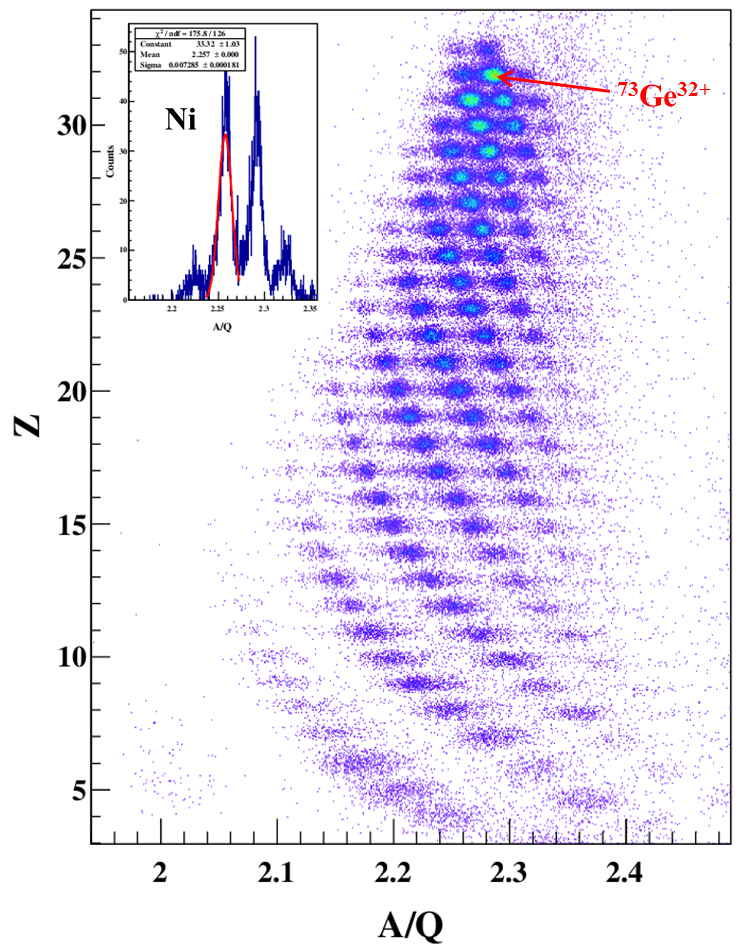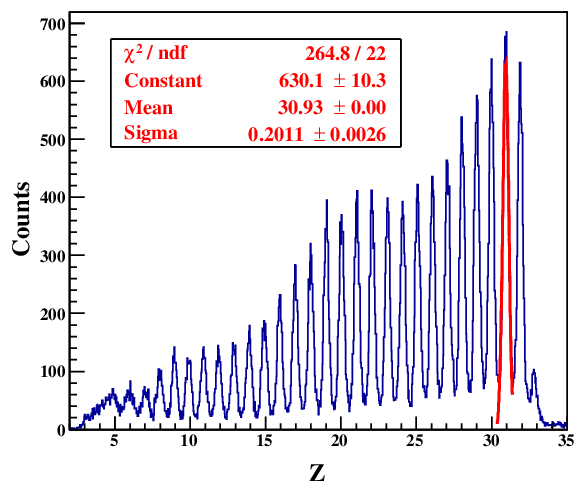First identification of nuclear fragments of 78Kr projectile fragmentation reaction at RIBLL2
Recently, the projectile fragmentation experiment of 78Kr at 300MeV/u was performed at the Heavy-Ion Research Facility in Lanzhou (HIRFL). It is the first time that the fragments with a mass number up to 75 has been identified clearly at the second Radioactive Ion Beam Line in Lanzou (RIBLL2) under full acceptance conditions.
The primary beam was extracted from the main cooling storage ring (CSRm) and implanted into the production targets at the entrance of RIBLL2. The products from B to As were transported to the External Target Facility (ETF) and identified with the Bρ-TOF-ΔE method.
In order to improve the ability of particle identification and extend research fields, a new TOF start detector with high time and position resolutions has been designed and installed in the F1 cave at RIBLL2, and the performances of other particle identification detectors have been further optimized.
Moreover, the beam orbit has been carefully tuned to ensure the particle transmit along the center of pipelines during the experiment. This allows researchers to derive the first-order matrix elements from the measured position and TOF information. Then the precise Bρ determination can be realized by the trajectory reconstruction method.
With the help of these high-powered detectors and the precise Bρ determination method, the fragments produced by the fragmentation of 78Kr at 300 MeV/u were identified clearly at RIBLL2, which has a full momentum acceptance of ±4.5%. The charge resolution of σZ~0.2 and the A/Q resolution of σA/Q~7.3×10-3 for 63Ni28+ were obtained in this experiment.
This great improvement will increase the yields of exotic nuclei, extend research fields, and promote the development of radioactive nuclear beam experiments.

Fig.1 Z versus A/Q particle identification plot for fragments produced in the reaction 78Kr+Al2O3(1.84mm) at 300 MeV/u. The inset is the projection of Ni isotopes into the A/Q axis. (Image by ZHANG Xueheng)

Fig.2 Charge spectrum for fragments produced by the fragmentation of 78Kr at 300 MeV/u. (Image by ZHANG Xueheng)
Contact :
LIU Fang
Institute of Modern Physics
Email: fangliu@impcas.ac.cn


 甘公网安备 62010202000713号
甘公网安备 62010202000713号


